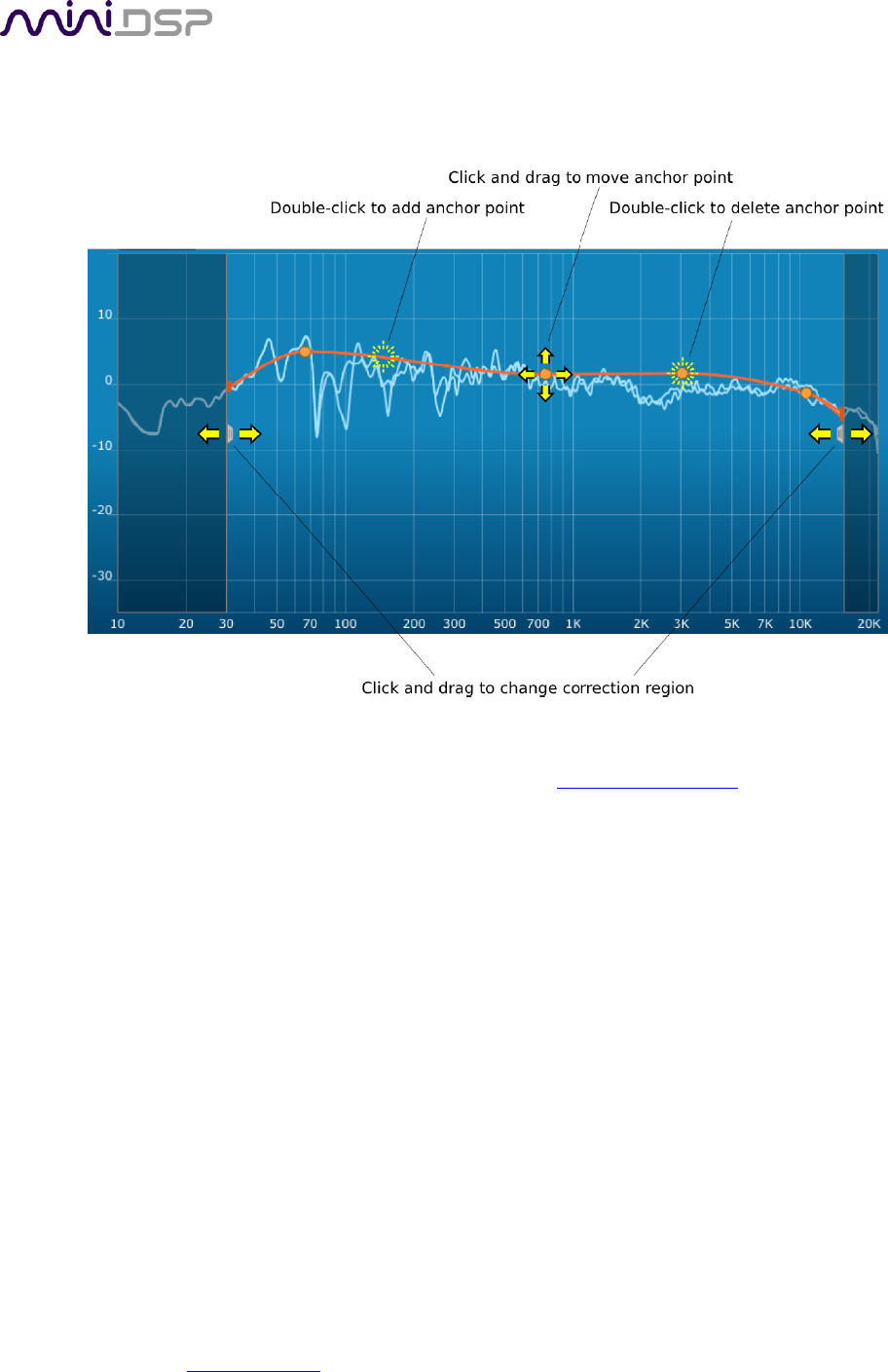User manual
Table Of Contents
- Important Information
- 1 Product Overview
- 2 Installation and Setup
- 3 Acoustic Measurement
- 4 Filter Design
- 5 Using the DDRC-88A audio processor
- 6 Optimizing gain structure
- 7 Additional Information

PRELIMINARY AND SUBJECT TO CHANGE
miniDSP Ltd, Hong Kong / www.minidsp.com / Features and specifications subject to change without prior notice 31
To alter the frequency region, drag the grey handles on either side of the graph. Note that you can’t drag these
handles over an anchor point, so you may need to move or delete an anchor point that is “in the way.”
If channels are linked, the same target curve is used for that group of linked channels. To create a separate
target curve for a single channel, unlink it as described above in Working with graphs.
4.2.3 Guidelines for target curve design
Care should be taken to create a target curve that works well with your speakers and room, as well as suiting
your personal preferences. Small changes to the target curve can have significant effects on the tonal quality of
the system, so it is important that you experiment with different target curves to find the optimum.
If you initially don’t achieve a satisfactory result, please ensure that you have spread your measurements over a
sufficiently large area and with sufficient variation in height. The following guidelines will help you understand
how to adjust your target curve.
Low-frequency extension and boost
All loudspeakers have a natural low-frequency roll off. Setting the target curve to boost the
region below the speaker’s natural roll off frequency may result in overdriving the speakers,
especially with smaller home theater loudspeakers and depending on your listening habits. As a
general rule, a home theater system should use bass management in the receiver to direct low
frequency content to the subwoofer.
The auto-target estimates the low-frequency roll-off and curve. You should determine by
listening whether this estimate is suitable for your system, and adjust the target curve
accordingly.










